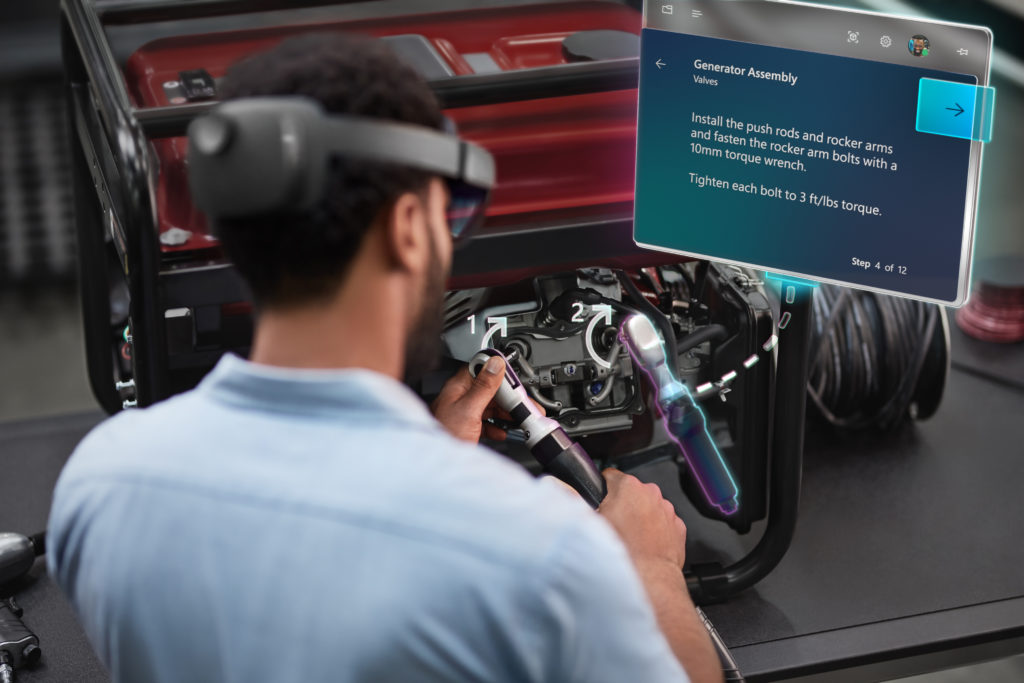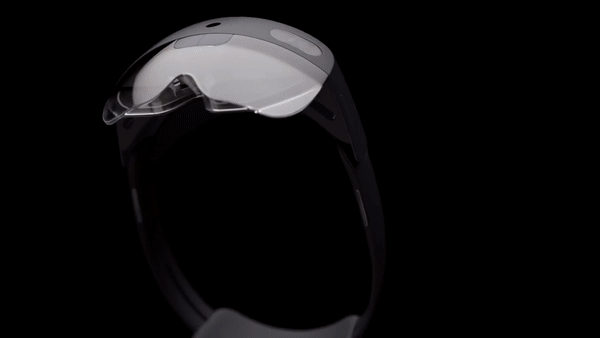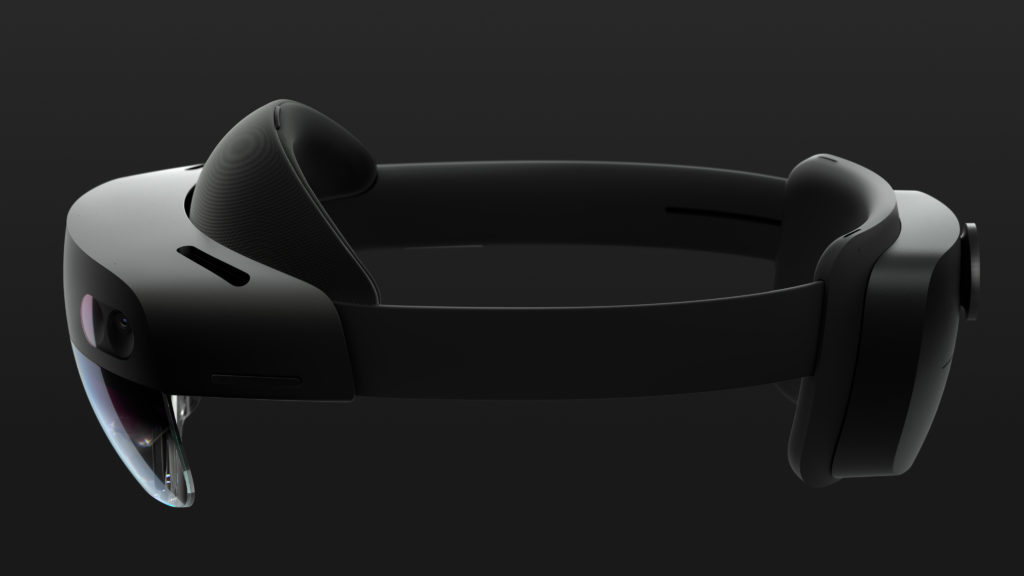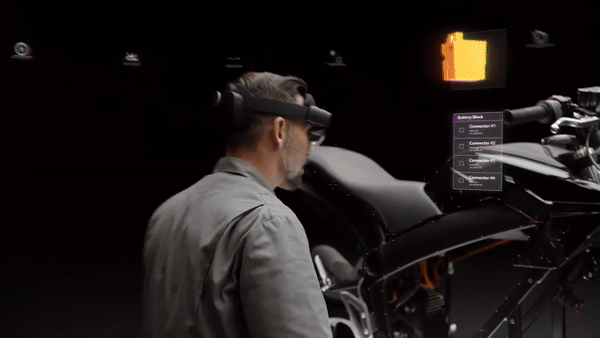After four years of waiting, does Microsoft’s new holographic computer live up to the hype?
In a word, yes.
After unveiling the device last Sunday at MWC, Microsoft then went on to demo it to a select group of invited media (myself included)That’s where I finally got the chance to play around with what has to be one of the world’s most sophisticated toys, certainly for that price range.
I won’t go over the basic specs here. After a week of over-excited reporting, the device itself – and Microsoft’s strategy for it – have been thoroughly analyzed from just about every angle; from in-depth technical reviews and accounts of testing in Redmond prior to the launch, to the nay-sayers who still insist that the whole thing is doomed to fail. What I’m interested in, however, is what this means for the broader immersive tech ecosystem.
The HoloLens and I go way back. Ever since I demoed the device in London for the first time back in 2016 I was convinced this was going to be something truly transformational. I went on to report on many different use cases that demonstrated just how much value the mixed reality proposition could bring to all sorts of industries.

Possible HoloLens 2 use-case / Image Credit: Microsoft
While others griped endlessly about the field-of-view and somewhat stilted gestural interface, I always preferred to focus on the bigger picture. The HoloLens was essentially an excellent proof-of-concept, and much of its technology was still amazingly ahead of its time even four years after launching. I had the opportunity to deep-dive into how the Microsoft team painstakingly developed the awesome spatial audio feature to heighten immersion, and interviewed its creator Alex Kipman on his vision for the future of both the device and the tech.
So after hearing all about the devices predecessor at the launch in Barcelona, I was keen to see it with my own eyes. Would it actually deliver on the promises Kipman had made on-stage the night before?
When I first put the headset on, we were off to a good start. Promise number was kept right off the bat: the HoloLens 2 is vastly more comfortable than its original counterpart. I’m not sure if it was exactly “three times more comfortable” like Kipman claimed but it was definitely comfortable! Whereas I usually came away from HoloLens demos with big red marks on the bridge of my nose, the weight of this new device was elegantly distributed; this time the center of gravity is located much further towards the back of the device. This, combined with a lighter carbon fiber construction, results in a far more natural experience which can be enjoyed for longer periods of time without discomfort.
The second promise Kipman made was that this new rendition of the HoloLens provided a much more immersive experience. Microsoft reports that the field-of-view (FOV) is twice the size of the old HoloLens, although some have since challenged those claims. I have always maintained that even with the restricted FOV of the original, your brain adjusted to the experience pretty quickly. However, the extended FOV of the HoloLens 2 did make it easier to adjust, allowing me to immerse myself into the demos at a rapid pace.
The FOV on the HoloLens 2 doesn’t quite cover your entire line-of-sight, but it does fill enough of your peripheral vision to the point that it doesn’t interfere with the experience. I spoke to Mark Christian, Global Director of Immersive Learning at Pearson – one of Microsoft’s HoloLens Partners – who told me that after delivering over 200 demos on the first day at MWC (conference attendees were waiting over 3 hours in line for the chance to try the device) not one person mentioned feeling limited by the FOV.
So now that we got that out-of-the-way, lets dive in to what excited me most during my own demos. Surprisingly enough, I found myself enjoying the device the most during the first couple of minutes of each experience, where you’re essentially calibrating the device.
By my third of fourth calibration attempt I knew exactly what to expect, but it was still magic none-the-less; and to me it really sums up why this is an awesome leap forward for Microsoft and for mixed reality technology as a whole. The process shines especially bright when it comes to eye-tracking and voice recognition.

HoloLens 2 / Image Credit: Microsoft
The first calibration exercise (after you do the familiar lining up of a holographic box onto the middle of your display so you can see all four edges) has a series of bright spinning jewels pop up in different places in your field of view. I’m instructed to just look at them, without moving my head. As my eyes rest briefly on each jewel, the digital model disappears in-turn; the HoloLens 2 knows exactly where you’re looking. After that’s done, a colorful hummingbird materializes in front of me.
The device then scans my hands — automatically adjusting to their shape and size. When I move them the tiny bird reacts by flying over to hover above them. I change hands and move them around, feeling like Snow White in a Disney film as my new digital friend — who I really felt like naming — follows my every move. Once the calibration process was completed, I tearfully watched my feathered companion disappear.
Of course this hummingbird excersice exists merely as a way for HoloLens 2 to scan your hands and calibrate your experience, allowing for more fluid, natural interactions with digital objects. Gone are the “pinch” and “bloom” gestures required to operate the original device; now you can pretty much grab, stretch, toss, and turn your holograms with a variety of realistic hand gestures. Thanks to the devices eye-tracking technology, you can even activate certain actions just by gazing in a specific direction. Even simple acts such as reading benefited greatly from this capability.
In one of the demos I participated in text information was displayed on the screen of my HoloLens 2, and as my eyes finished reading the last line, the text automatically scrolled up. Not only that, but it did so faster or more slowly depending on my reading speed, similar to production member manually operating a teleprompter. It was absolutely seamless, and a prefect example of a theory Microsoft CEO Satya Nadella referred to in his speech on Sunday at MWC: the best technology eventually becomes invisible.

HoloLens 2 / Image Credit: Microsoft
As for value, the price of the HoloLens 2 is a fairly cheap investment for most of the larger enterprises that have been using it so far. The cost and efficiency savings mixed reality have already brought to companies like Thyssenkrupp and Trimble are nothing short of remarkable, and the possibilities for increasing those returns even further are practically endless. That’s low-hanging fruit as far as Microsoft is concerned. I have a feeling the only question those companies are asking themselves is “how many of these will we be allowed to order” and “how quickly can Microsoft deliver?”
Microsoft wants to create this “open ecosystem” around mixed reality and expand its appeal to small and medium-sized businesses. For SMEs, the fact that the HoloLens 2 will also be offered on a lease basis for a few hundred dollars a month is a big attraction. The key, however, is going to be what out-of-the-box content they will be able to offer those companies. This is again where Microsoft’s strategy really comes together. For the past four years they have worked with these big corporations and their R&D departments to create valuable use-cases, platforms and applications for enterprise-focused mixed reality. If they’re now able to package that as part of a subscription service for SME’s, it could prompt a lot of smaller business owners to try out the technology themselves.

Possible HoloLens 2 use-case / Image Credit: Microsoft
So from a business perspective, there were very few surprises to come out of these announcements at MWC. Microsoft has proven itself to be steadfast and consistent in its strategy for the HoloLens and mixed reality, sticking to its original pivot towards enterprise.
At the same time, however, there is no doubt that this technology will serve as much more than a tool for businesses. As the device continues to evolve, it will become lighter, cheaper, more intuitive, and increasingly transparent. And when the time, price, and most importantly, the content ecosystem is right, it will reach that sweet spot where consumers will also embrace it. The HoloLens 2 brings us a big step closer to the future of mixed reality technology, but there’s no rush as far as Microsoft is concerned. They’re in it for the long haul, and in the meantime I have a feeling they will start cashing in just fine without even having to touch the consumer market.
The post Hands-On With The HoloLens 2 appeared first on VRScout.
from VRScout https://ift.tt/2INCKFi
via IFTTT
No comments:
Post a Comment